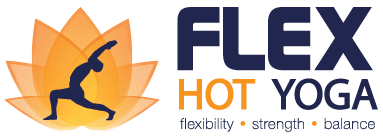Posture of the month: Koundinyasana B (Flying Splits)
In March, our Posture of the Month is Koundinyasana B, the Flying Splits.
Koundinyasana is Sanskrit for 'Sage Koundinya's Pose' (from Koundinya: the sage's name and asana: posture). As an advanced arm balance and twist, it is also know as the ‘Flying Splits’. Are you wondering about the difference to Koundinyasana A, by the way? The difference is in the positioning of the leg that rests on the arm: In ‘A’ it is the top leg lifting back, and in ‘B’ the bottom leg.
Sage Kaundinya, after who the posture is named, was a learned scholar at the royal court in 6th century India. He had mastered the Vedic scriptures at a young age and had been appointed to the court of King Suddhodana of the Sakyas in Kapilavastu.
Whilst working in this position, be predicted that the newborn Prince Siddhartha Gautama would one day become the Buddha, and he would be his first disciple. This opinion wasn’t popular at court at all, given that the baby prince was the heir to the throne and thus meant to be raised in the dharma of a ksatriya, not a brahmin, so not as a sage but a king and warrior.
But as we know from the history books, prince Siddhartha at 29 years old decided to leave his royal life and seek enlightenment, accompanied by Koundinya and a few other monks. Keep reading to find out what happened next…
The Benefits of practicing the Flying Splits
With advanced postures like Koundinyasana B, keep in mind that not only the end result is worth mentioning, but all the little steps in between that help you build the strength and balance to be able to finally perform the posture. They all hold health benefits of their own…
Lengthens and stretches the spine, thereby releasing tensions and aches
Strongly engages your core and shoulders, so they become stronger and more defined over time
Massages and thus helps cleanse your abdominal organs, which is good for your digestions and can help aid weight loss
Improves balance, body control and physical awareness
Contraindications
Whilst with practice and under the guidance of experienced teachers anyone can over time build the strength and balance to practice the flying splits, some people should be careful. If you suffer from any of the following conditions, please see your doctor or physiotherapist before you start practicing, and let your yoga teacher know before your class begins:
Injuries of your arms, hips, lower back, or abdominal area
Inflammatory conditions like arthritis, carpal tunnel syndrome, spondylitis, or sciatica
Heart conditions incl. high or low blood pressure
Irritable Bowel Syndrome and other digestive issues
Whilst this is not an ‘illness’, we also recommend abstaining from practicing Koundinyasana during menstruation and pregnancy
Sage Koundinya - having faith, no matter what
So there they were, Siddhartha, Koundinya and their fellow monks, meditating in the forest for years, living as ascetics… and yet enlightenment wouldn’t come. So eventually, prince Siddhartha decided to leave his friends and continue his search in solitude. You can imagine the hurt and disappointment of his fellow seekers when they found him missing. However, Koundinya’s faith in him never wavered. His trust remained, even when Siddhartha left behind the very teachings Koundinya had shared with him, to find truth elsewhere.
Fast forward, and the young prince eventually found enlightenment and returned as the Buddha. He was now teaching that true happiness is a balance of both extremes, the material and the spiritual, which he called the ‘Middle Way’. As Koundinya had predicted decades earlier, he became one of the Buddha’s first students and taught the philosophy of the Middle Way for the rest of his life.
So can you see why Koundinyasana, a delicate, advanced pose that’s all about finding the right balance, is named after Koundinya? Enjoy the practice this month, and keep in mind what it is here to teach you…
So are you ready to learn Koundinyasana B? Then come along to Flex regularly and practice with us! There are over 25 classes/week, and we will practice it daily during all of March 2023!
This month, we thank Ashish from Fitsri and Jamie Martin from Pilgrimage of the Heart for their insights that have informed this blog post.



